A Swanne Inne was recorded here in 1586. By the second half of the 18th century, it had become a private house, but later reverted to trading as an inn called The Star. In the 1970s and 1980s, it had several name changes, but the pub now bears its original name. A later indenture, c1650, uses the modern spelling of The Swan Inn. This spelling was generally used until the second half of the 18th century, when documents named the premises as Swan House. It was then was a ‘private dwelling house’ until 1830.
Prints and text about The Old Swanne Inn.
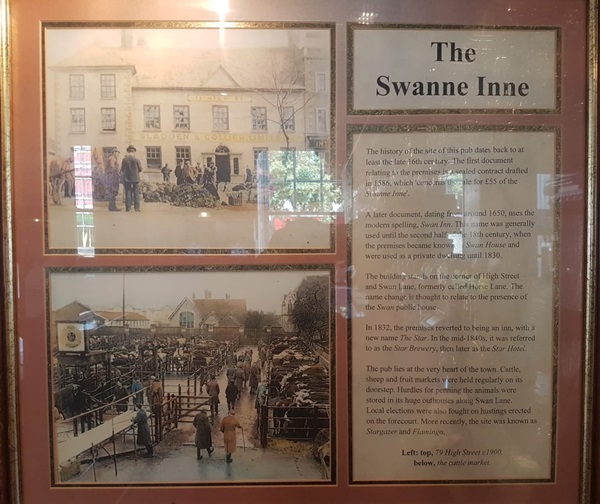
The text reads: The history of the site of this pub dates back to at least the late 16th century. The first document relating to the premises is a sealed contract drafted in 1586, which ‘concerns the sale for £55 of the Swanne Inne’.
A later document, dating from around 1650, uses the modern spelling, Swan Inn. This name was generally used until the second half of the 18th century, when the premises became known as Swan House and were used as a private dwelling until 1830.
The building stands on the corner of High Street and Swan Lane, formerly called Horse Lane. The name change is thought to relate to the presence of the Swan public house.
In 1832, the premises reverted to being an inn, with a new name The Star. In the mid-1840s, it was referred to as the Star Brewery, then later as the Star Hotel.
The pub lies at the very heart of the town. Cattle, sheep and fruit markets were held regularly on its doorstep. Hurdles for penning the animals were stored in its huge outhouses along Swan Lane. Local elections were also fought on hustings erected on the forecourt. More recently, the site was known as Stargazer and Flamingo.
Left: top, 79 High Street, c1900, below, the cattle market.
Photographs and text about George May.
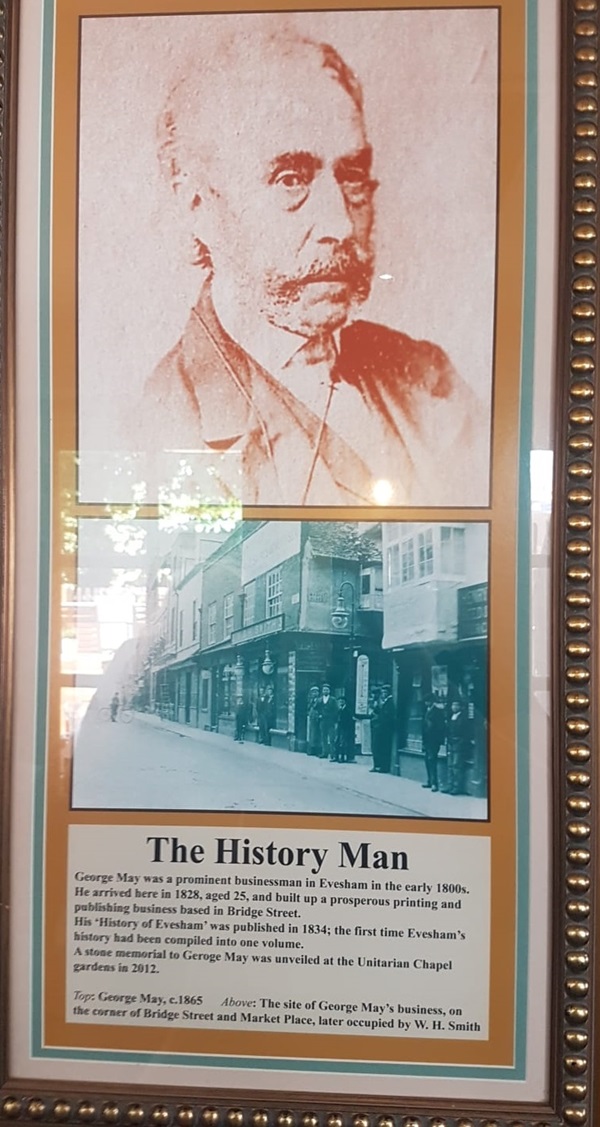
The text reads: George May was a prominent businessman in Evesham in the early 1800s. He arrived here in 1828, aged 25, and built up a prosperous printing and publishing business based in Bridge Street. His History of Evesham was published in 1834; the first time Evesham’s history had been compiled into one volume. A stone memorial to George May was unveiled at the Unitarian Chapel gardens in 2012.
Top: George May, c1865
Above: The site of George May’s business, on the corner of Bridge Street and Market Place, later occupied by W.H. Smith.
An illustration and text about the Civil War.
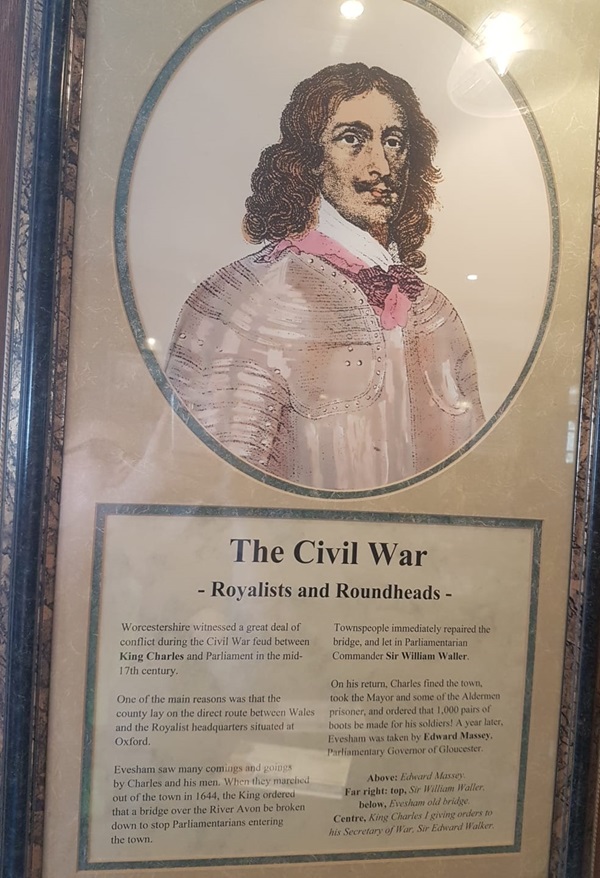
The text reads: Worcestershire witnessed a great deal of conflict during the Civil War feud between King Charles and Parliament in the mid-17th century.
One of the main reasons was that the county lay on the direct route between Wales and the Royalist headquarters situated at Oxford.
Evesham saw many comings and goings by Charles and his men. When they marched out of the town in 1644, the King ordered that a bridge over the River Avon be broken down to stop Parliamentarians entering the town.
Townspeople immediately repaired the bridge, and let in Parliamentarian commander Sir William Waller.
On his return, Charles fined the town, took the mayor and some of the Aldermen prisoners, and ordered that 1,000 pairs of boots be made for his soldiers! A year later, Evesham was taken by Edward Massey, Parliamentary governor of Gloucester.
Above: Edward Massey
Far right: top, Sir William Waller, below, Evesham old bridge, centre, King Charles I giving orders to his Secretary of War, Sir Edward Waller.
Photographs and text about the Vales of Evesham.
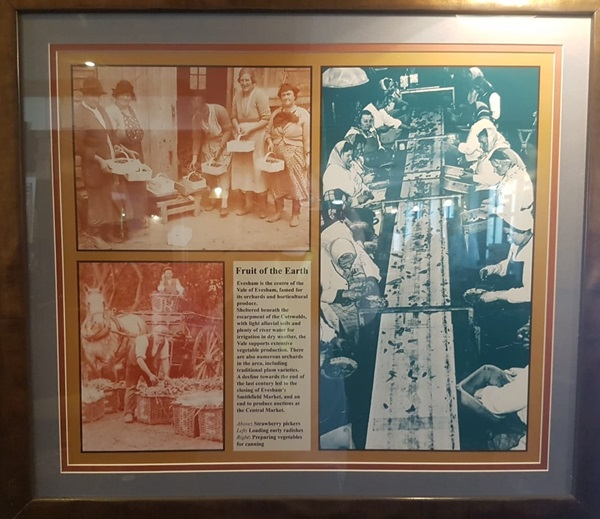
The text reads: Evesham is the centre of the Vale of Evesham, famed for its orchards and horticultural produce.
Sheltered beneath the escarpment of the Cotswolds, with light alluvial soils and plenty of river water for irrigation in dry weather, the Vale supports extensive vegetable production. There are also numerous orchards in the area, including traditional plum varieties.
A decline towards the end of the last century led to the closing of Evesham’s Smithfield Market, and an end to produce auctions at the Central Market.
Above: Strawberry pickers
Left: Loading early radishes
Right: Preparing vegetables for canning.
Prints and text about Evesham’s French connection.
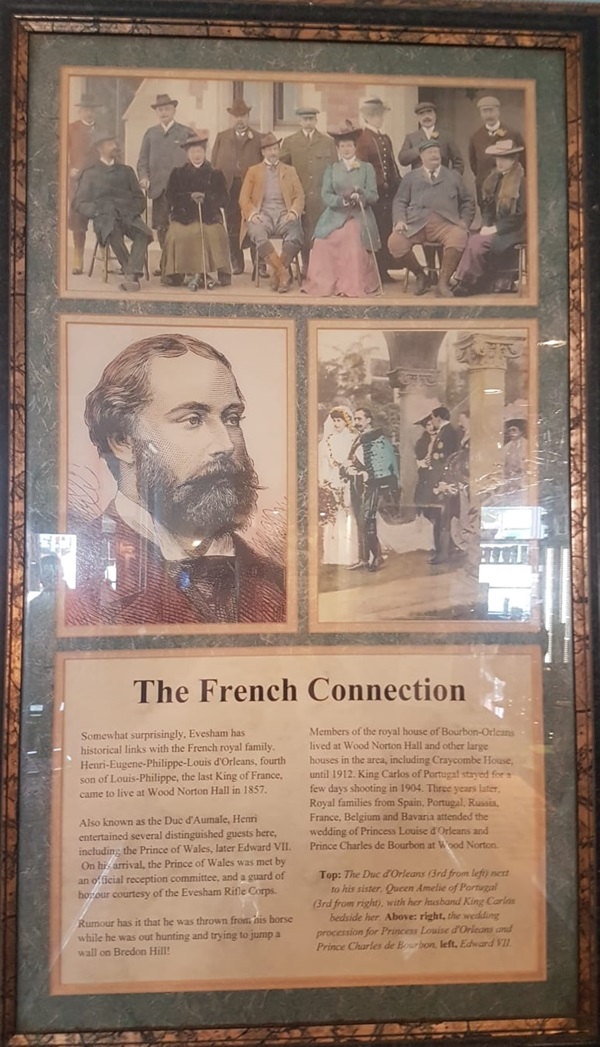
The text reads: Somewhat surprisingly, Evesham has historical links with the French royal family. Henri-Eugene-Phillippe-Louis d’Orleans, fourth son of Louis-Phillippe, the last King of France, came to live at Wood Norton Hall in 1857.
Also known as the Due d’Aumale, Henri entertained several distinguished guests here, including several distinguished guests here, including the Prince of Wales, later Edward VII. On his arrival, the Prince of Wales was met by an official reception committee, and a group of honour courtesy of the Evesham Rifle Corps.
Rumour has it that he was thrown from his horse while he was out hunting and trying to jump a wall on Bredon Hill!
Members of the royal house of Bourbon-Orleans lived at Wood Norton Hall and other large houses in the area, including Craycombe House, until 1912. King Carlos of Portugal stayed for a few days shooting in 1904. Three years later, Royal families from Spain, Portugal, Russia, France, Belgium and Bavaria attended the wedding pf Princess Louise d’Orleans and Prince Charles de Bourbon at Wood Norton.
Top: The Duc d’Orleans (3rd from left) nest to his sister, Queen Amelie of Portugal (3rd from right), with his husband King Carlos beside her
Above: right, the wedding procession for Princess Louise d’Orleans and Prince Charles de Bourbon, left, Edward VII.
A print of the bell tower of Evesham Abbey.
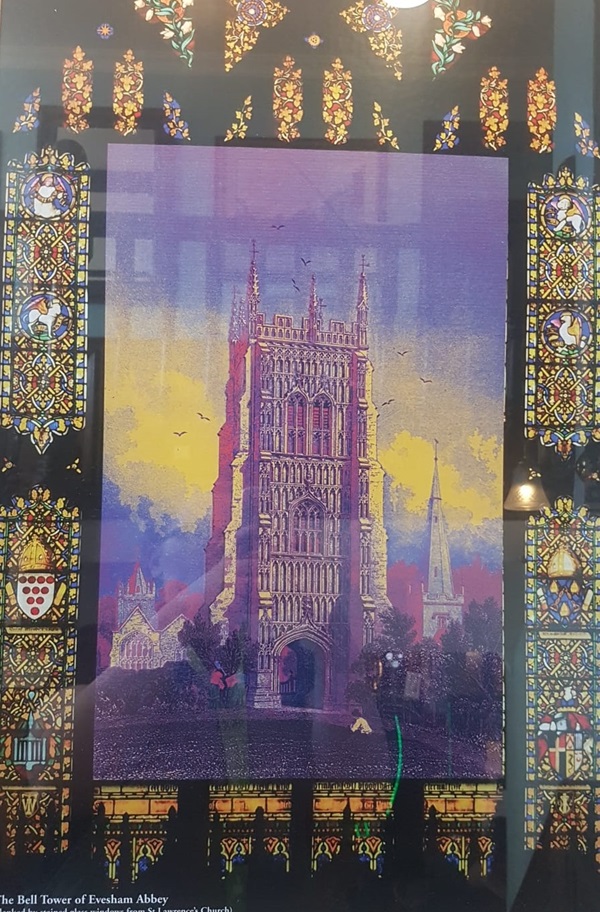
A dragon sculpture created by local company Iron Works.
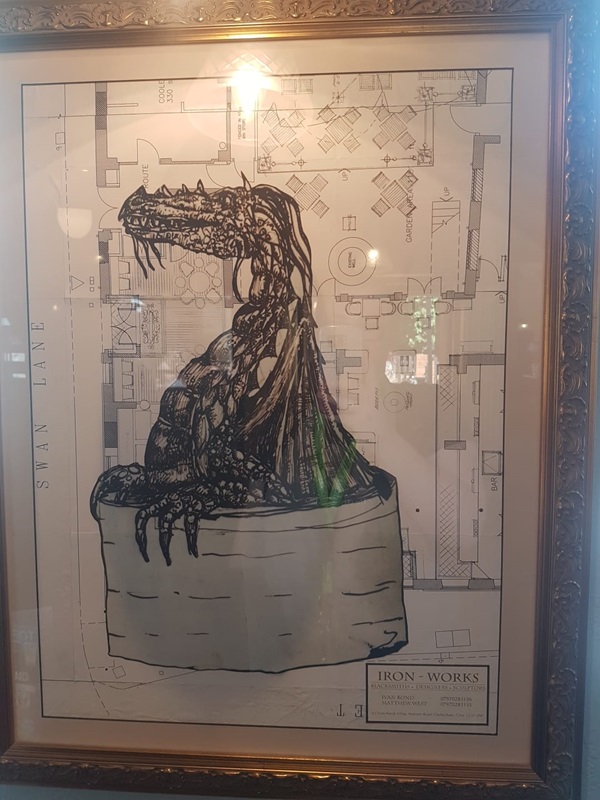
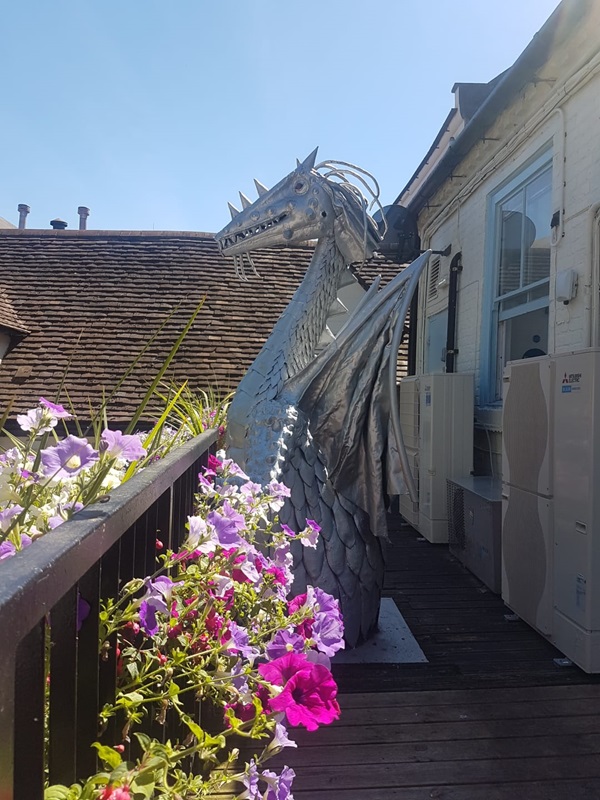
External photograph of the building – main entrance.
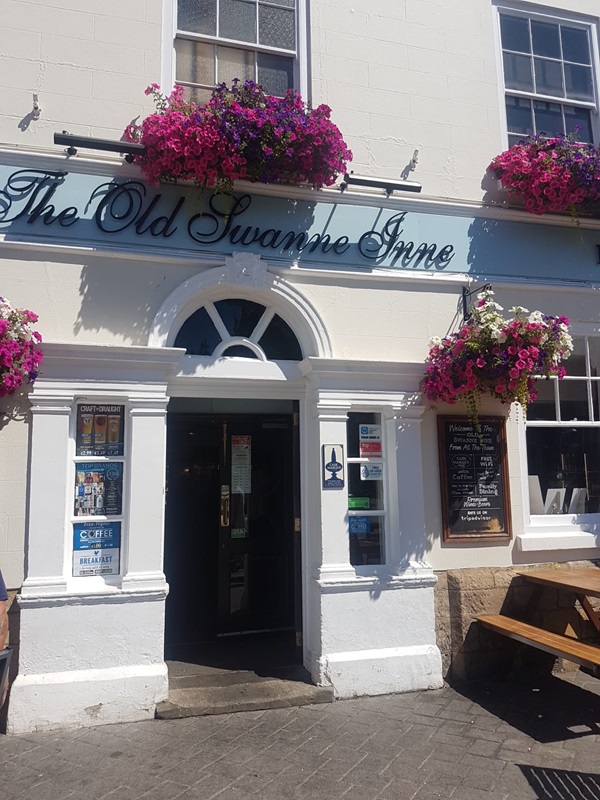
Extract from Wetherspoon News Spring 2018.
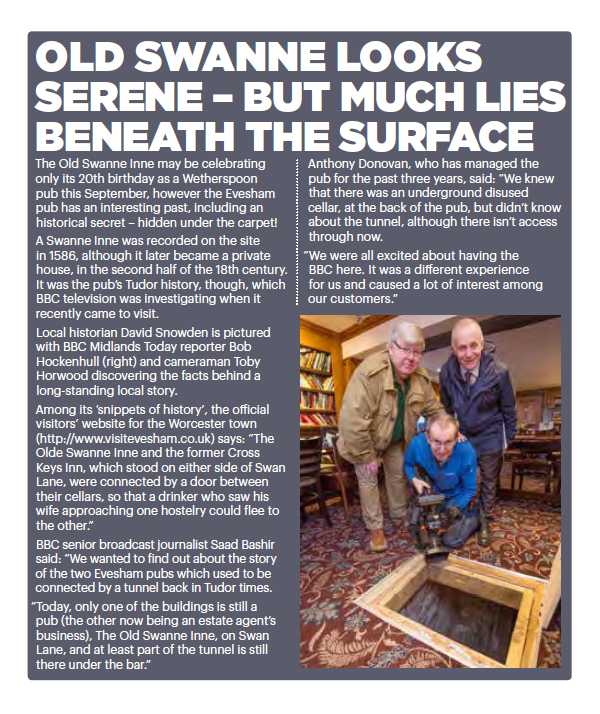
If you have information on the history of this pub, then we’d like you to share it with us. Please e-mail all information to: pubhistories@jdwetherspoon.co.uk